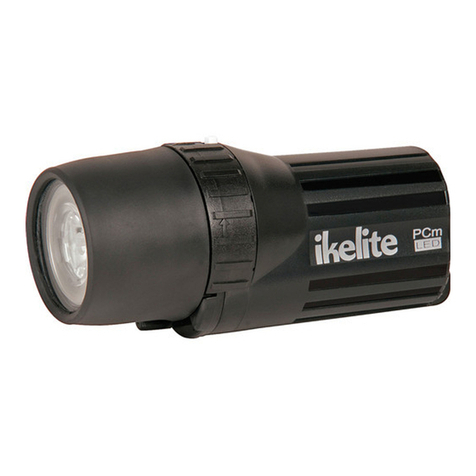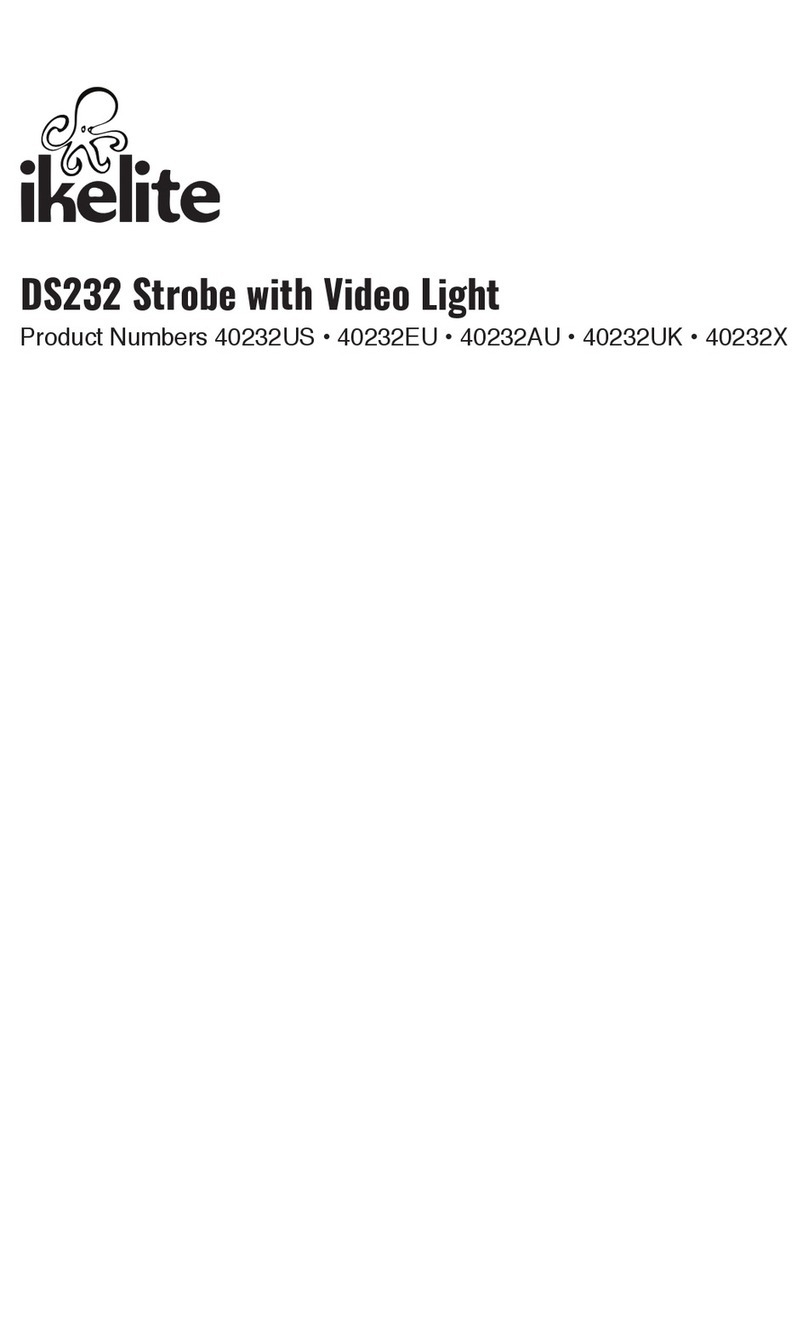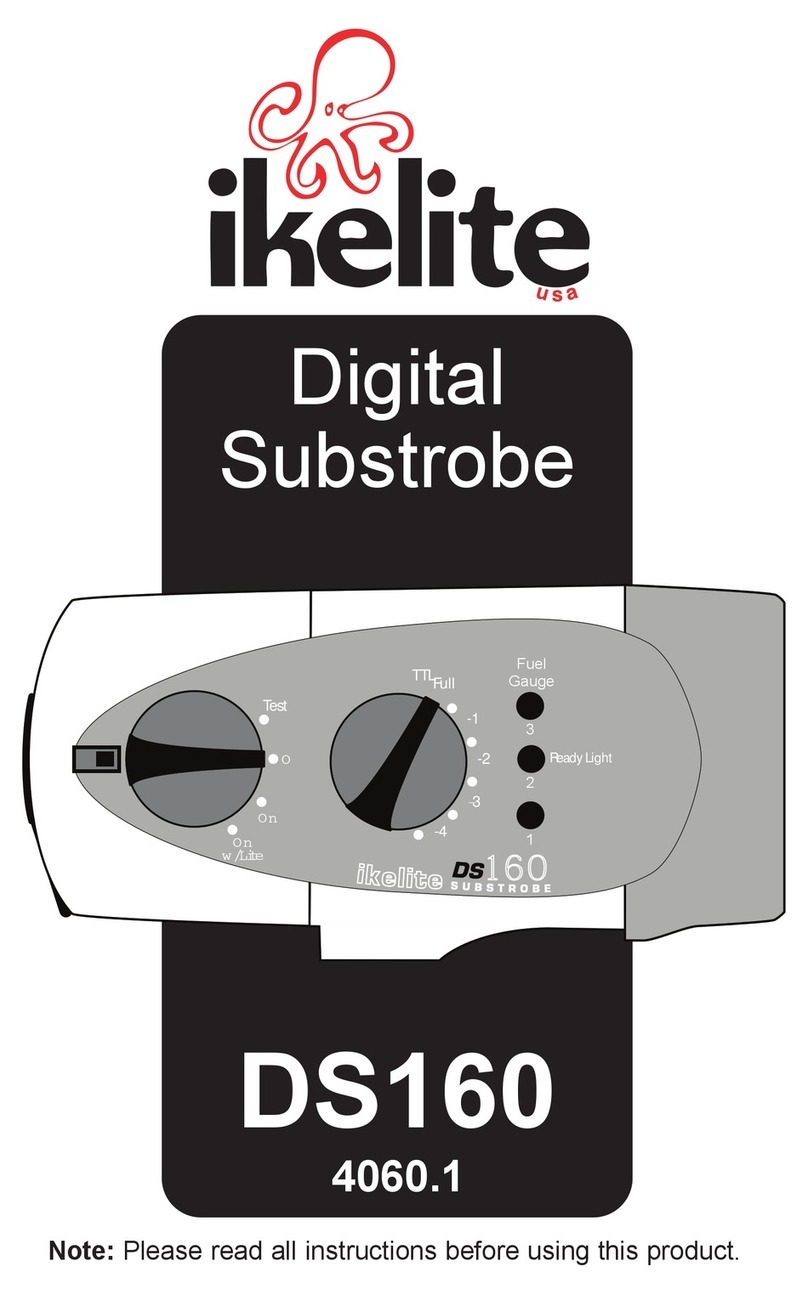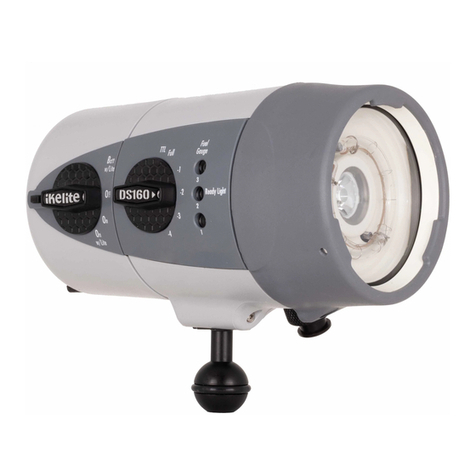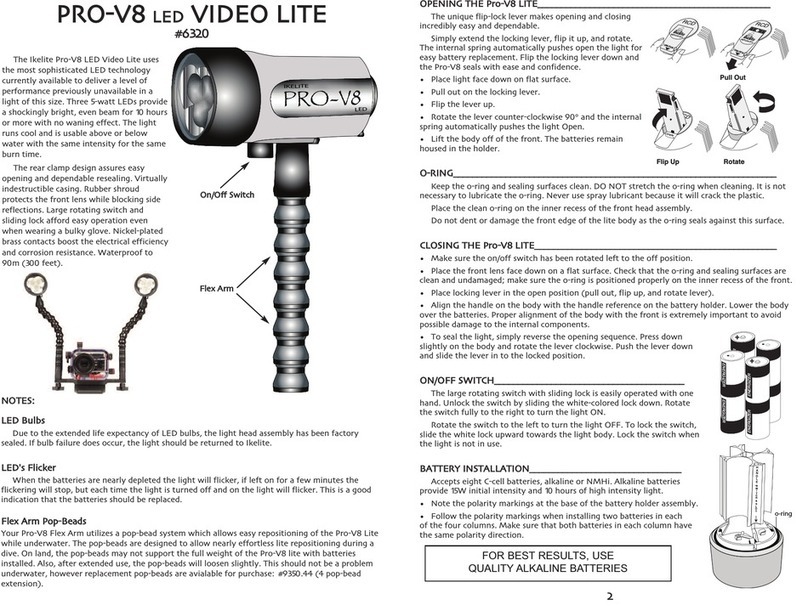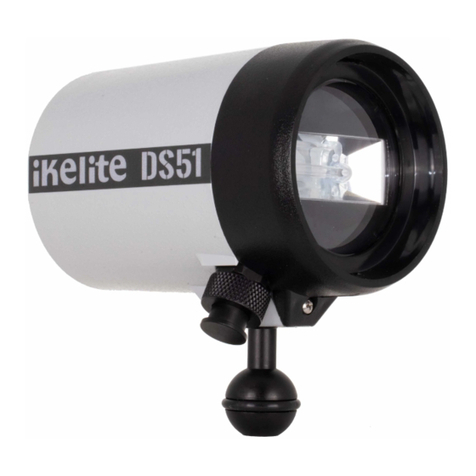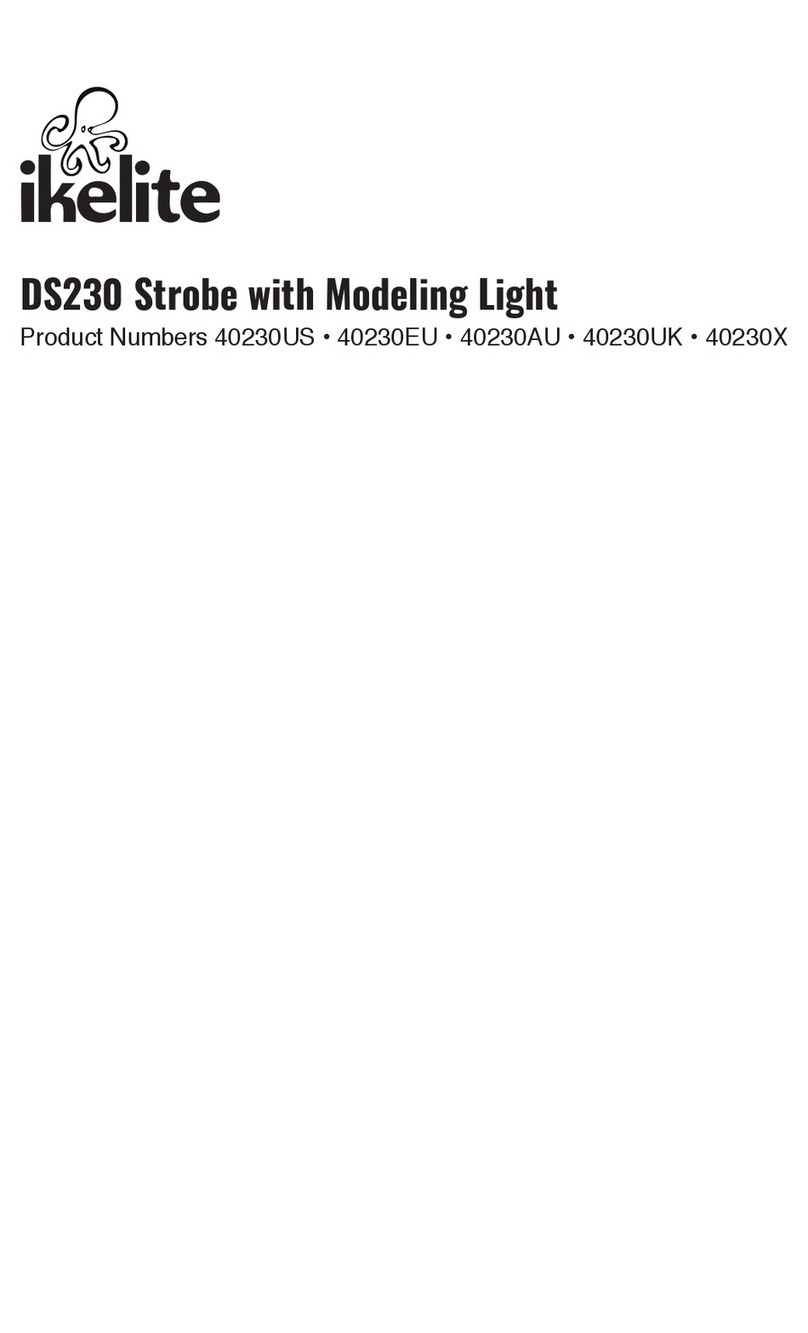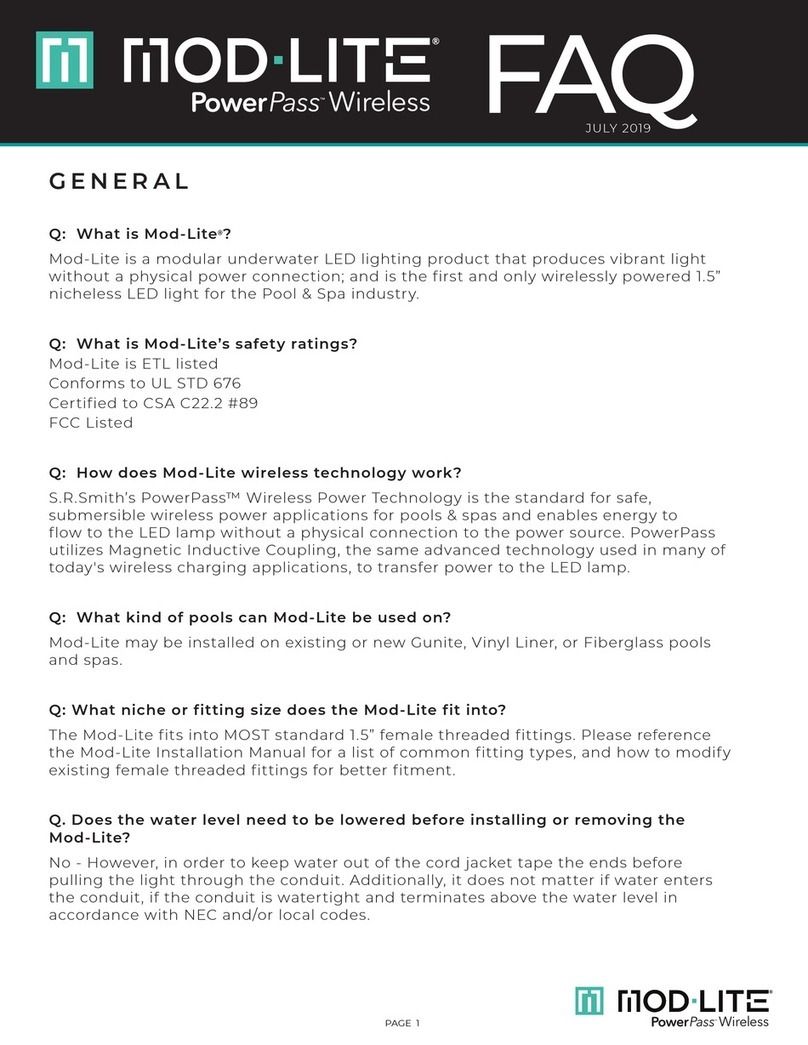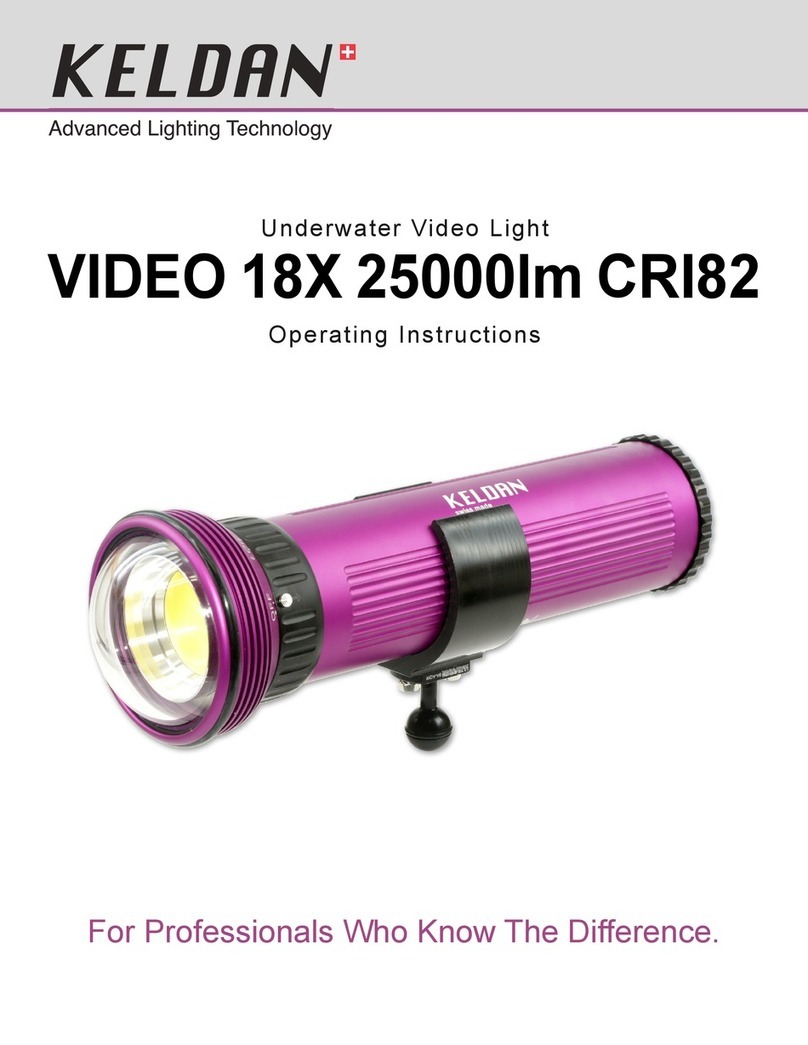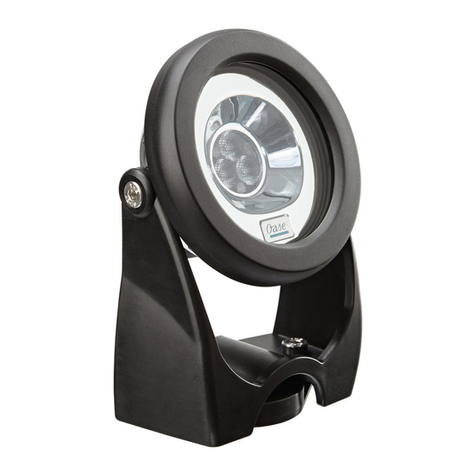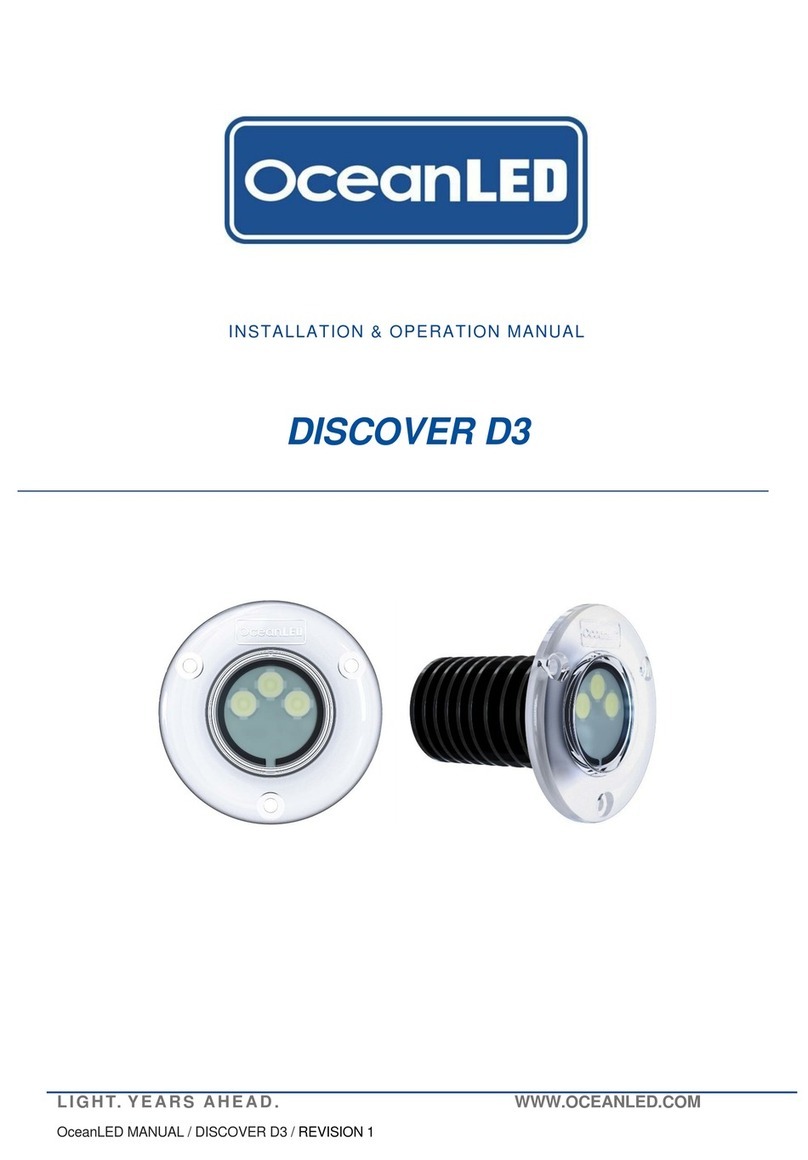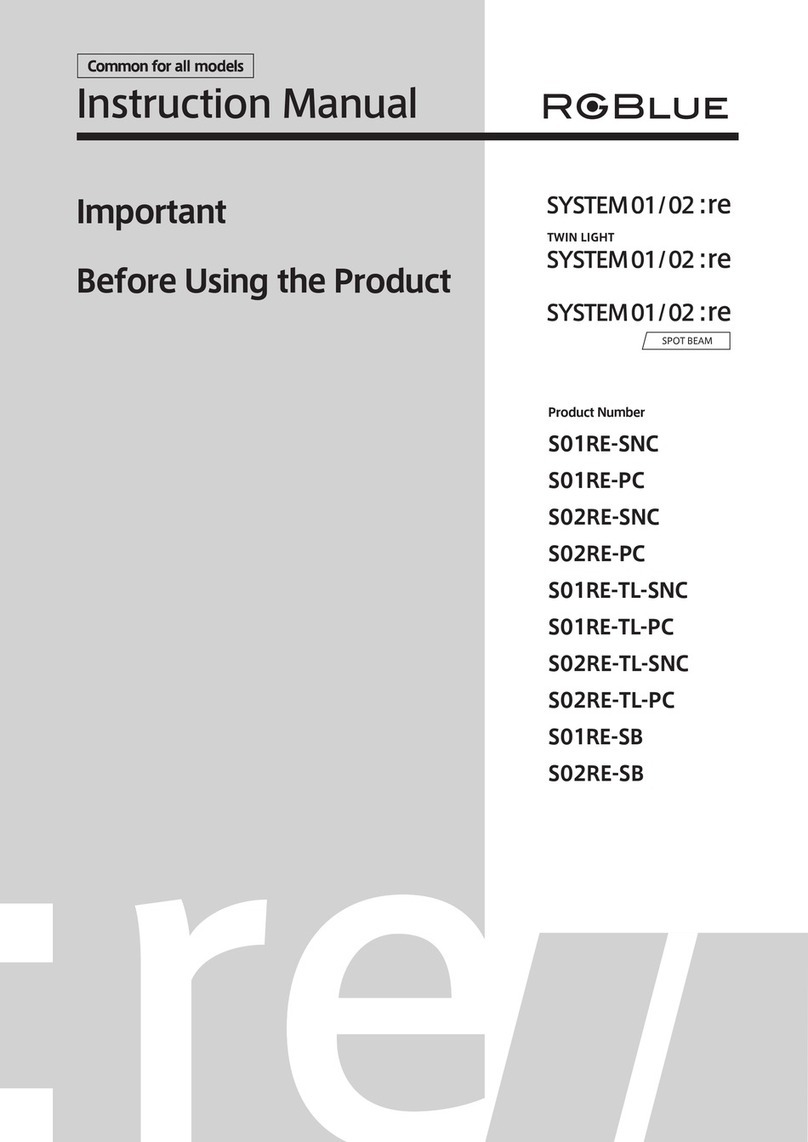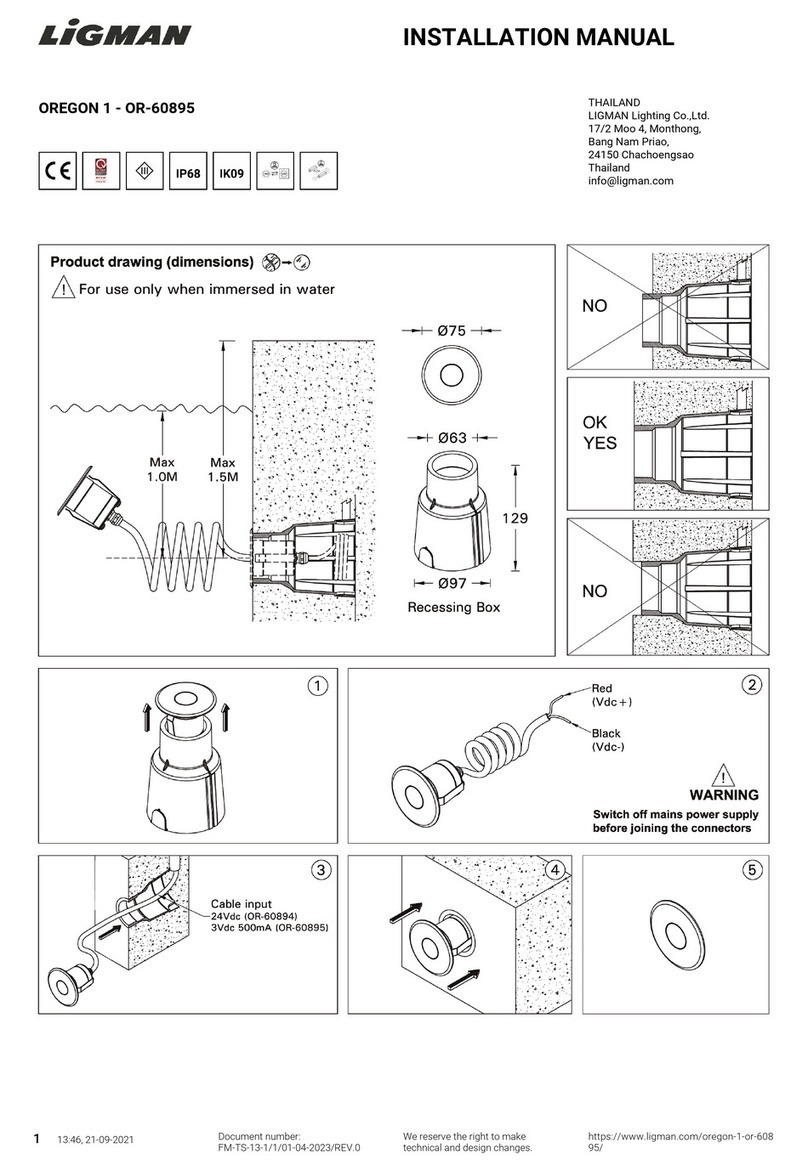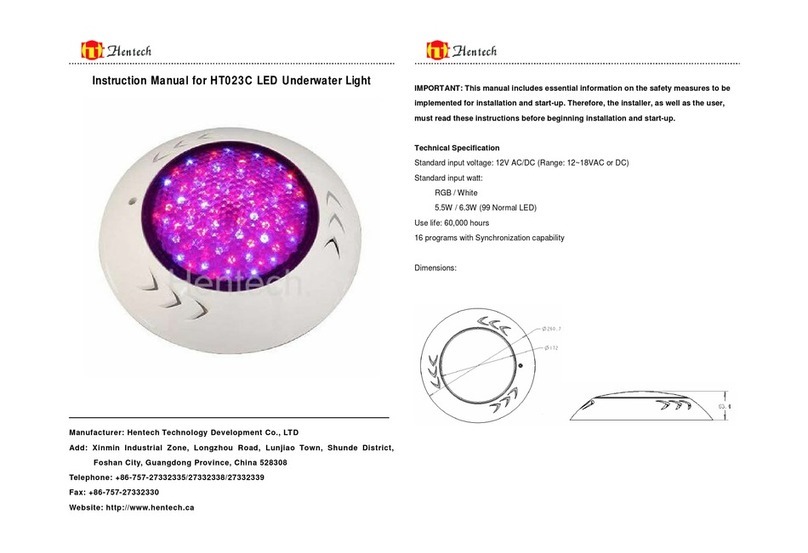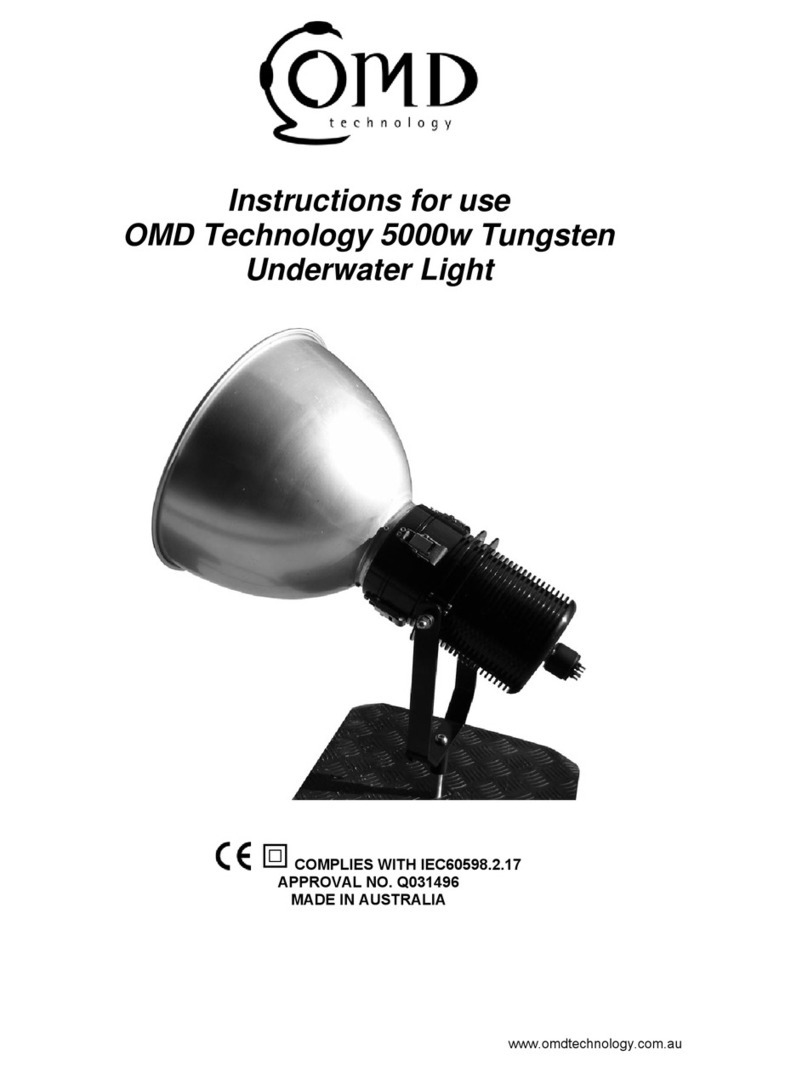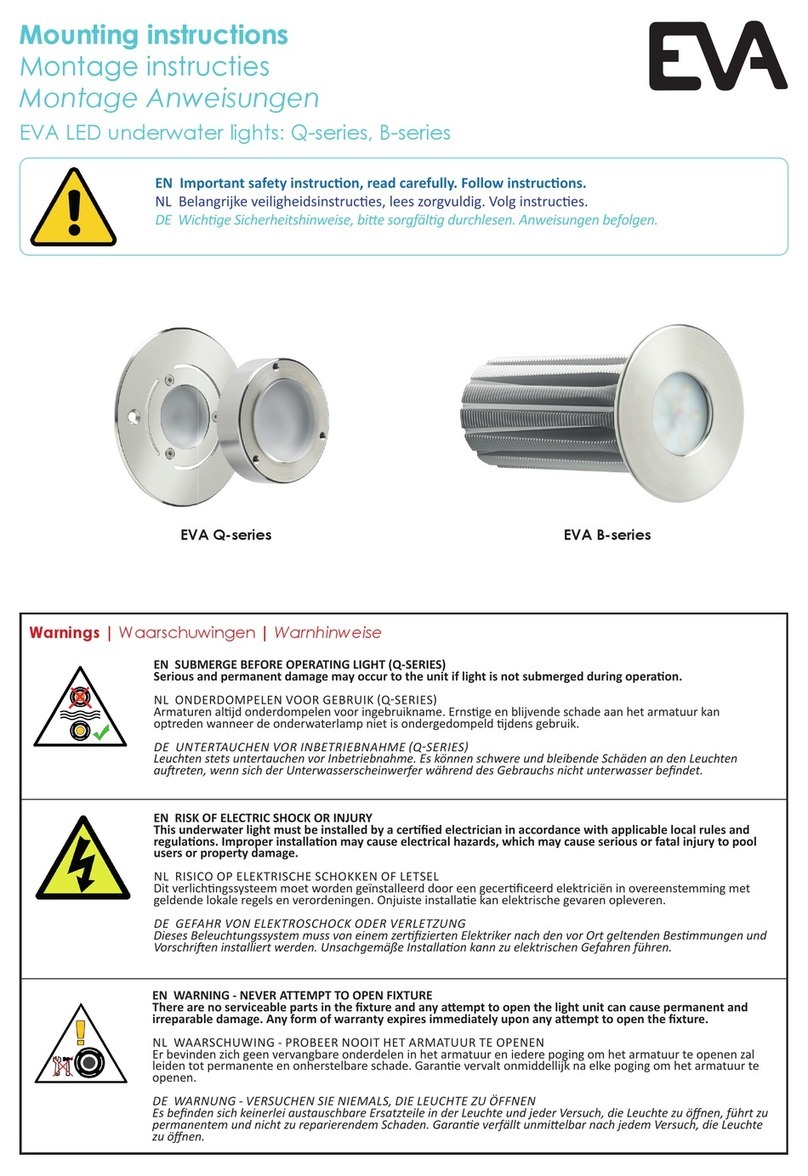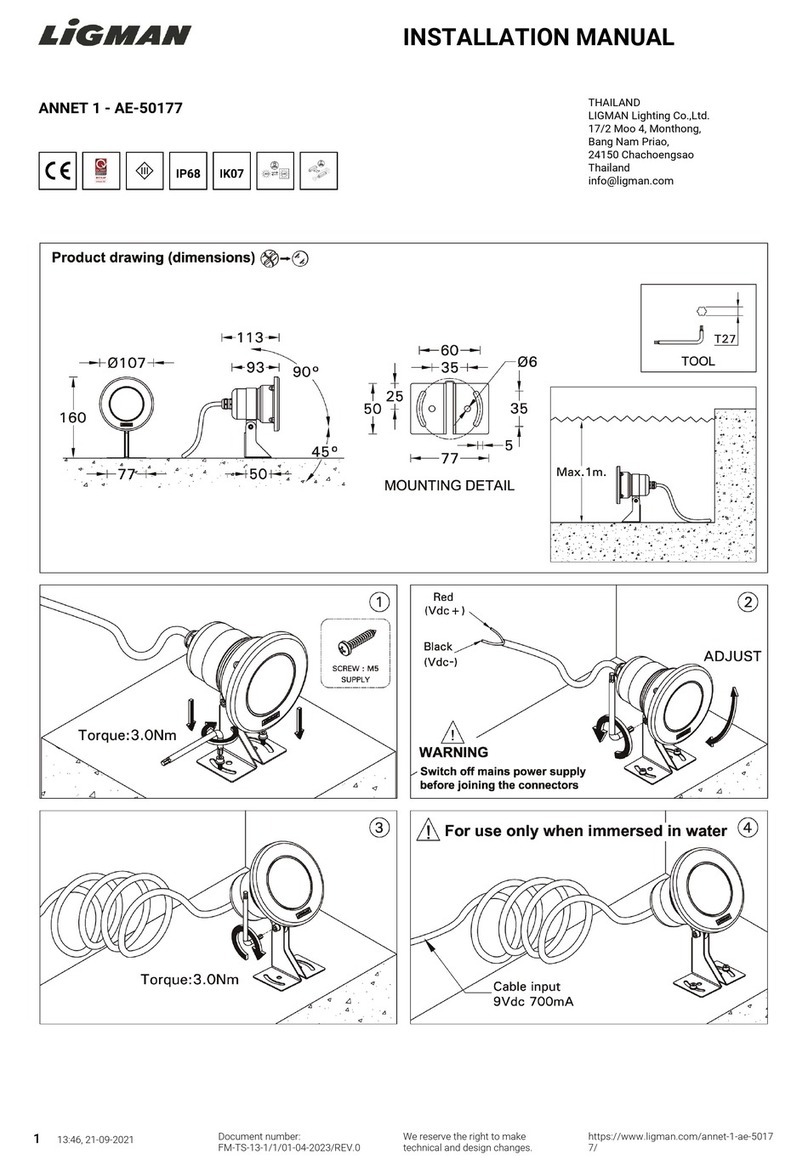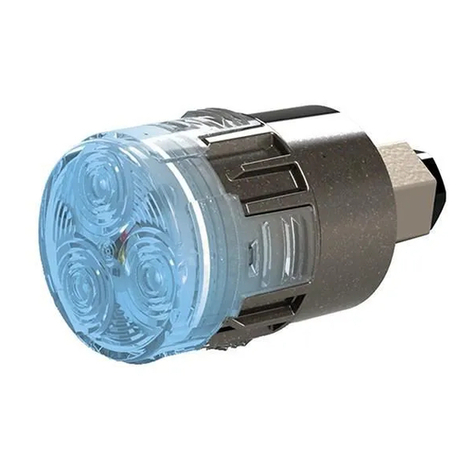1133
CCOOMMPPAATTIIBBLLEE CCAAMMEERRAASS
The Ikelite DS125 strobe is preflash compatible and provides optimum performance
with traditional film cameras, digital still cameras, and dSLR cameras in related Ikelite
housings. The appropriate sync cord or sensor must be connected to trigger the strobe.
TTRRAADDIITTIIOONNAALL FFIILLMM CCAAMMEERRAASS________________________________________________________________________________
The TTL/Auto exposure mode on the Ikelite DS125 strobe is compatible with the
following TTL film camera systems. The camera reads the light passing thru-the-lens
and automatically signals the strobe to turn off when the exposure is correct.
• SLR 35mm camera in the Ikelite SLR-AF Housing or another brand SLR housing
that features Nikon-based TTL electronics.
• Nikonos camera
• Nikonos RS camera
DDIIGGIITTAALL SSTTIILLLL AANNDD ddSSLLRR CCAAMMEERRAASS______________________________________________________________________
TTrriiggggeerreedd vviiaa SSyynncc CCoorrdd
Many Ikelite Digital Still Housings and Ikelite dSLR Housings feature TTL compatible
circuitry connected with the Ikelite female bulkhead connector. Connect the Ikelite sync
cord from the Ikelite housing to the DS125 strobe for TTL auto exposure.
Some other Ikelite housing models may feature the Ikelite bulkhead connector but
offer only manual exposure because TTL conversion circuitry for that specific camera
model may be unavailable or not yet developed.
TTrriiggggeerreedd vviiaa SSllaavvee SSeennssoorr
Some digital still cameras feature a small built-in flash wwiitthhoouutta means to connect
a sync cord for an external strobe. Most of these cameras fire their built-in flash more
than once while taking a flash picture. This happens so fast it is difficult to see, but the
preflash helps the camera determine focus, exposure and color balance. After the
preflash, the camera’s built-in flash then fires to illuminate the subject and the picture
is taken. For the external strobe to provide proper exposure, it MUST be preflash
compatible to duplicate the preflash sequence. The Ikelite DS125 strobe is a pprreeffllaasshh
ccoommppaattiibblleestrobe.
For those cameras that do not offer a means to connect a sync cord, the optional
Ikelite DS Sensor #4100.5 may be compatible to trigger the DS125 strobe. Built-in slave
sensors in the DS Sensor detect the light output from the camera’s built-in flash and
automatically signal the DS125 strobe to mimic the output by starting and stopping
automatically. However, some of the newest digital still cameras feature a preflash
sequence too quick for the Ikelite DS Sensor to identify proper auto exposure, and the
Ikelite E -Controller #4100.6 would then be recommended instead.
For maximum control using manual exposure, choose the optional Ikelite
E -Controller #4100.6, which connects to the DS125 strobe and provides 10-manual
power settings in half-stop increments. The E -Controller can be triggered using the
built-in slave sensor or by connecting an optional sync cord.
1144
TTTTLL // AAUUTTOO EEXXPPOOSSUURREE
Most newer cameras and strobes feature TTL/Auto exposure, which automatically
compensates for aperture, distance, extension tubes, and filters. Considering the wide
range of apertures and subject distances, select the TTL/Auto exposure mode to easily
control balanced lighting and close-up photography.
When the strobe fires, the camera reads the light and automatically signals the
strobe to turn off when the exposure is correct. Both the strobe and camera must
feature TTL/Auto exposure compatible electronics. The appropriate TTL sync cord or
optional Ikelite DS Sensor is required to relay the TTL/Auto exposure signal from the
camera to the strobe.
Please review the "Compatible Camera" section on the previous page for additional
information.
TTTTLL SSYYNNCC CCOORRDDSS________________________________________________________________________________________________________
Ikelite offers interchangeable sync cords so that different camera systems can be
connected to the DS125 strobe. A TTL sync cord is required to send the TTL/Auto
exposure signal from the camera to the strobe.
DDSS SSEENNSSOORR ##44110000..55__________________________________________________________________________________________________
The Ikelite DS Sensor provides auto exposure functions through slave sensors
enabling the Ikelite Substrobe to be moved freely and positioned virtually anywhere.
The DS Sensor connects only to Ikelite DS Substrobes and detects when the light from
the TTL strobe connected to the camera starts and stops, and automatically signals the
Ikelite Substrobe to start and stop in sync.
Many digital still cameras feature a small built-in flash without a means to connect
a sync cord for an external strobe. For these situations, the optional Ikelite DS Sensor
#4100.5 may be compatible to trigger the DS125 strobe. The sensor detects the light
output from the camera’s built-in flash and automatically signals the DS125 strobe to
mimic the output. Some of the newest digital still cameras feature a preflash sequence
too quick for the Ikelite DS Sensor to identify proper auto exposure, and the Ikelite
E -Controller #4100.6 would then be recommended instead.
RRAAPPIIDD UUSSEE
The DS125 strobe should NOT be continuously fired more than 15 times in rapid
succession. In such instances, allow the DS125 strobe to cool off for at least 10 minutes.
